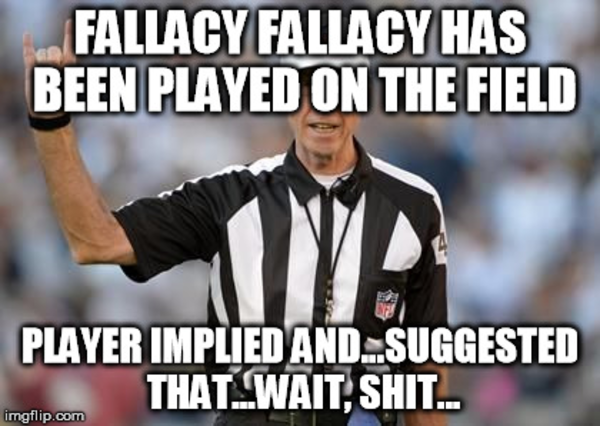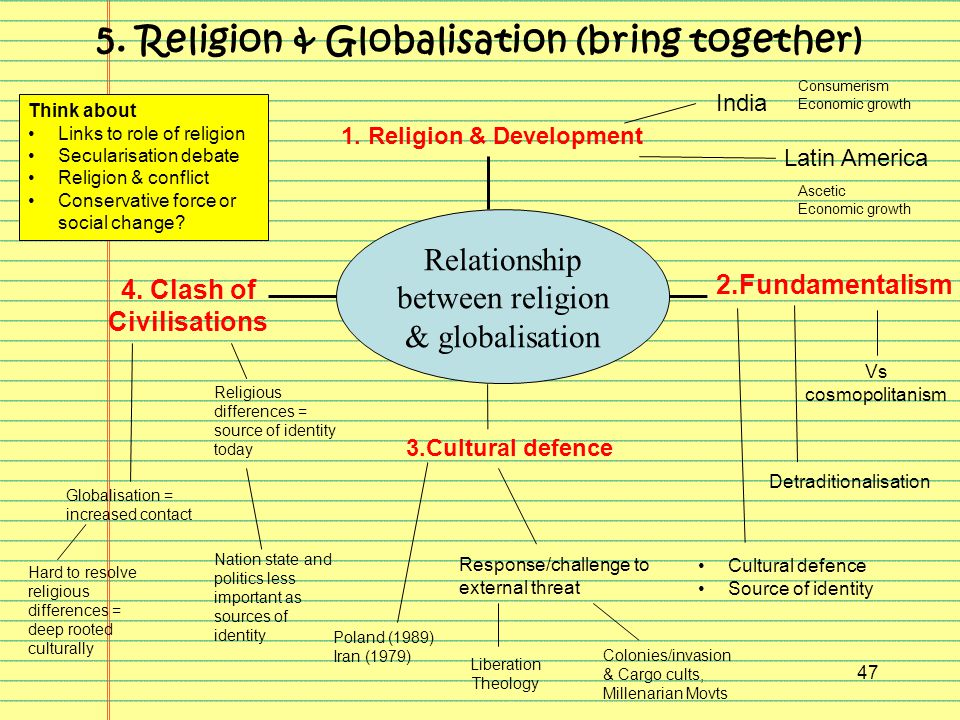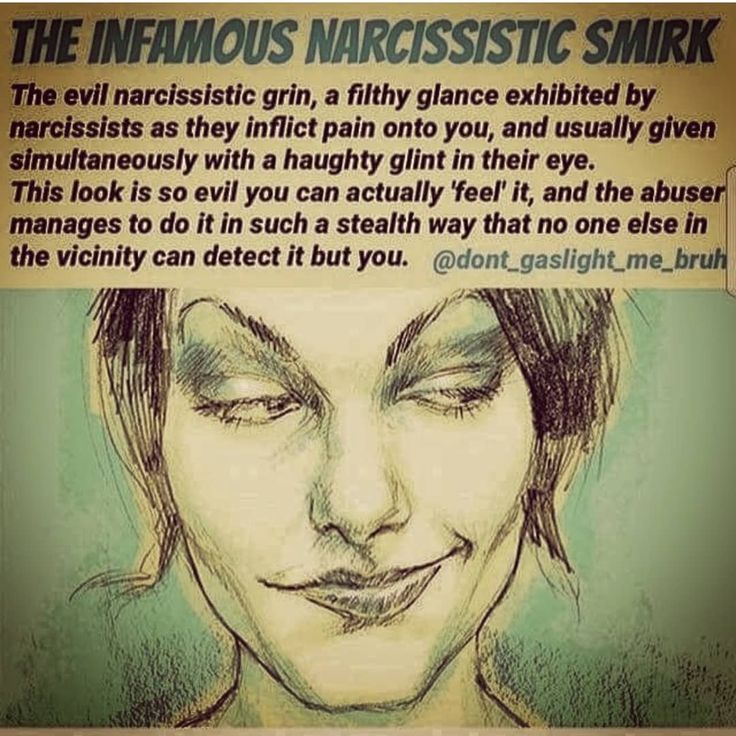Black or white fallacy
The Black-or-White Fallacy
Alias
1:- Bifurcation
- Black-and-White Fallacy2
- Bogus Dilemma3
- Either/Or Fallacy
- False Dichotomy4
- False Dilemma (See the Exposure section, below.)
Taxonomy: Logical Fallacy > Informal Fallacy > The Black-or-White Fallacy
Example:
Gerda Reith is convinced that superstition can be a positive force. "It gives you a sense of control by making you think you can work out what's going to happen next," she says. "And it also makes you feel lucky. And to take a risk or to enter into a chancy situation, you really have to believe in your own luck. In that sense, it's a very useful way of thinking, because the alternative is fatalism, which is to say, 'Oh, there's nothing I can do.' At least superstition makes people do things." 5
Analysis
Forms:
See the See the Technical Appendix, below.
Exposition:
The black-or-white fallacy occurs only in arguments that have a disjunctive premiss―that is, a premiss of the "either-or" form that gives alternatives. The fallacy is committed when a disjunct―that is, an alternative―is incorrectly omitted. The fallacy tries to force you to choose either black or white when gray is an available alternative.
Exposure:
This is one of the favorite fallacies of extremists, and many public debates on political and moral issues are polarized by those who use it to try to force others to the extremes. For instance, the debate over the legal and ethical status of abortion is dominated by extremists who either oppose all abortions without exception, or favor the permissibility of abortion up to the point of birth.
Now, I'm not taking a position on this issue; I'm just pointing out that most people take neither extreme position. Most people think that some but not all abortions are morally permissible, and should be legally permissible as well. Maybe they're wrong, but differences of opinion on this issue are almost always over where on the spectrum from conception to birth to allow legal abortions.
Maybe they're wrong, but differences of opinion on this issue are almost always over where on the spectrum from conception to birth to allow legal abortions.
The extremists are as far apart as possible on this and other issues, and they hate each other. Most of the rest of us are trapped in between, but often closer to each other than we realize. For democracy to work as it is supposed to, people must be able to meet those they disagree with and address issues with reason, not violence. The extremists will never come together except to fight. This is why a political environment that is polarized to the extremes is a danger to democracy.
Analysis of the Example:
Fatalism is not the alternative to superstition; it is an alternative. Superstition involves acting in ways that are ineffective, whereas fatalism involves failing to act even in situations in which our efforts can be effective. Fortunately, there are other alternatives, such as recognizing that there are some things we can control and other things we cannot, and only acting in the first case.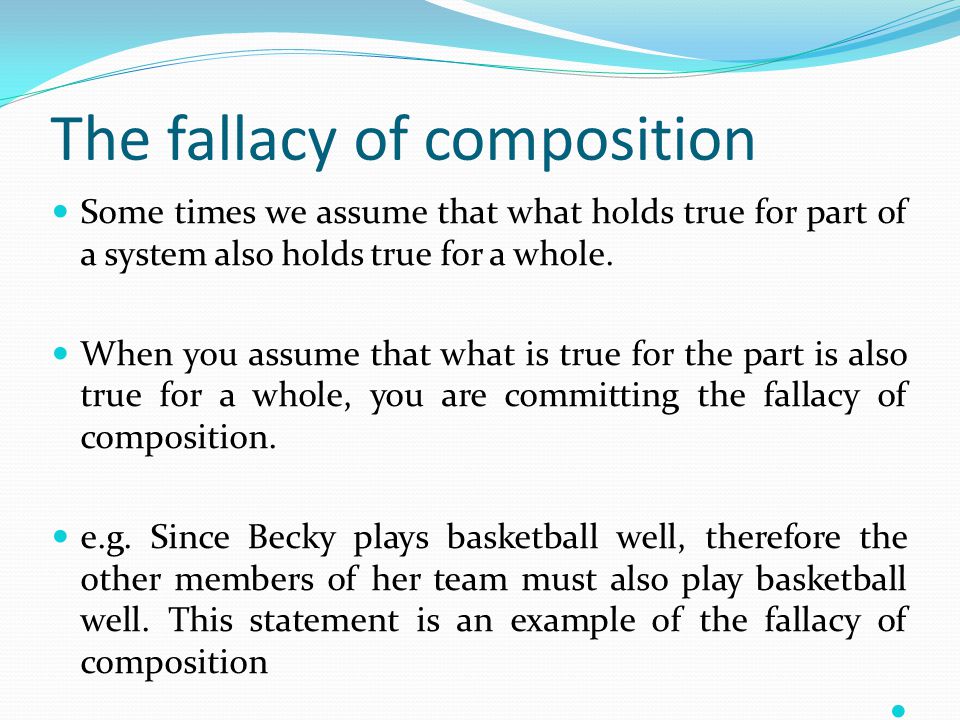
Notice the claim in the Example that "the alternative" to superstition "is fatalism". Beware of the phrase "the alternative" as there is seldom a single alternative available. If you hear that "the" alternative to some view or action is something unpleasant or obviously false, always ask: "Are there other alternatives? What are they?" The phrase "the alternative" is often a tip-off that a black-or-white fallacy is coming up.
Technical Appendix:
The Black-or-White Fallacy is a seemingly paradoxical fallacy in that it is a validating form of argument, that is, every instance of it is valid. It is, however, not the only informal fallacy with this surprising characteristic as Begging the Question is also validating. For example, some instances of the Black-or-White Fallacy have the familiar validating form:
| Disjunctive Syllogism | Simple Constructive Dilemma |
|---|---|
Either p or q.
Not-p. Therefore, q. |
Either p or q.
If p then r. If q then r. Therefore, r. |
The second form gives the fallacy its names of "bogus" or "false" dilemma. The dilemma is "bogus" or "false" because the disjunctive premiss does not include every alternative.
The seeming paradox of a valid fallacy can be dispelled by realizing that validity isn't everything: a good argument must also have true premisses, that is, it must be sound. Usually, however, the truth or falsity of premisses is not a question for logic, but for other sciences, or even common sense. So, while an argument with a false premiss is unsound, it is not usually considered to be fallacious6. However, when a disjunctive premiss is false for logical reasons, then the argument does commit a fallacy.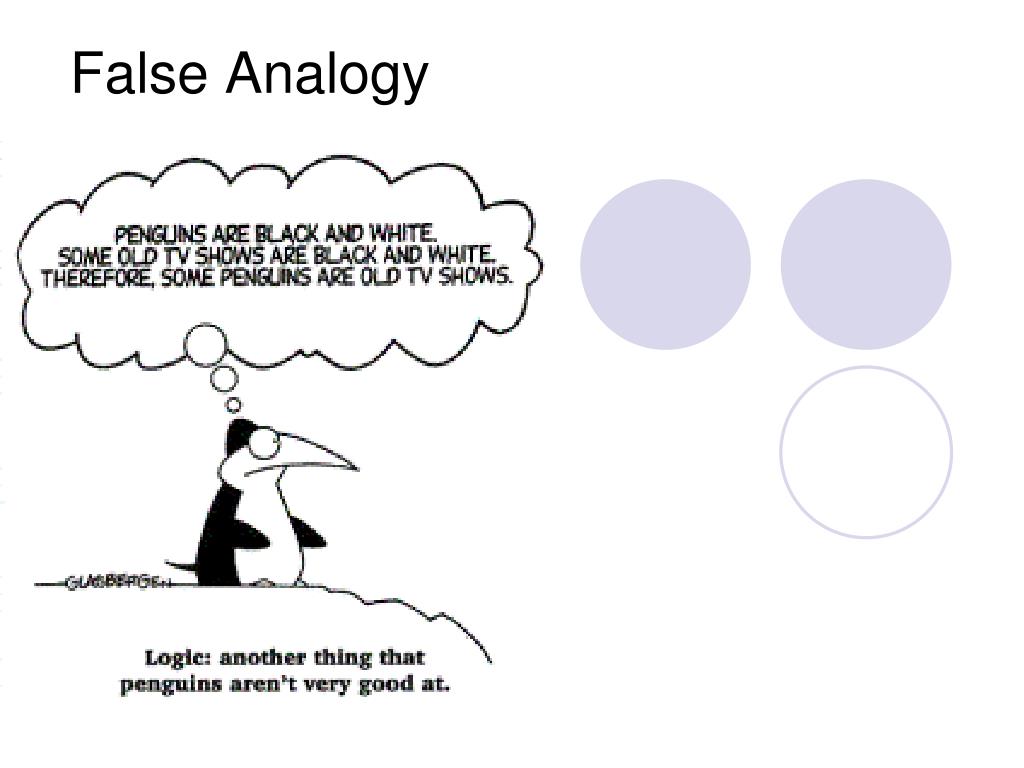
One such logical error is confusing contrary with contradictory propositions: given two contradictory propositions, exactly one will be true; but given two contrary propositions, at most one will be true, but both may be false. For example: "It's hot today" and "It's not hot today" are contradictories, whereas "It's cold today" and "It's hot today" are contraries, since it might be between cold and hot, say, warm or cool.
A disjunction whose disjuncts are contradictories is an instance of the Law of Excluded Middle, so it is logically true. For instance, "either it's hot today or it's not hot today." In contrast, a disjunction whose disjuncts are contraries is logically contingent. For example, "either it's hot today or it's cold today." An arguer who confuses contraries with contradictories in the premiss of an argument commits the Black-or-White Fallacy.
Notes:
- This fallacy is known by an unusually large number of names.
 I prefer "black-or-white fallacy" because it best describes the nature of the logical mistake underlying it. See S. Morris Engel's With Good Reason: An Introduction to Informal Fallacies (6th Edition) (St. Martin's, 2000), pp. 144, 153-6 & 302, for all of these aliases except "black-and-white fallacy" and "false dichotomy", but including "black-or-white fallacy".
I prefer "black-or-white fallacy" because it best describes the nature of the logical mistake underlying it. See S. Morris Engel's With Good Reason: An Introduction to Informal Fallacies (6th Edition) (St. Martin's, 2000), pp. 144, 153-6 & 302, for all of these aliases except "black-and-white fallacy" and "false dichotomy", but including "black-or-white fallacy".
- Peter A. Angeles, Dictionary of Philosophy (2000), see under "Fallacy, types of informal (1)".
- Madsen Pirie, How to Win Every Argument: The Use and Abuse of Logic (2015), pp. 24-26.
- Nigel Warburton, Thinking A to Z (2nd edition, 2000).
- David Newnham, "Hostages to Fortune", The Guardian, 12/13/2002.
- Some logicians do include an entire category for fallacies of false or questionable premisses in order to have a place for this fallacy and begging the question.
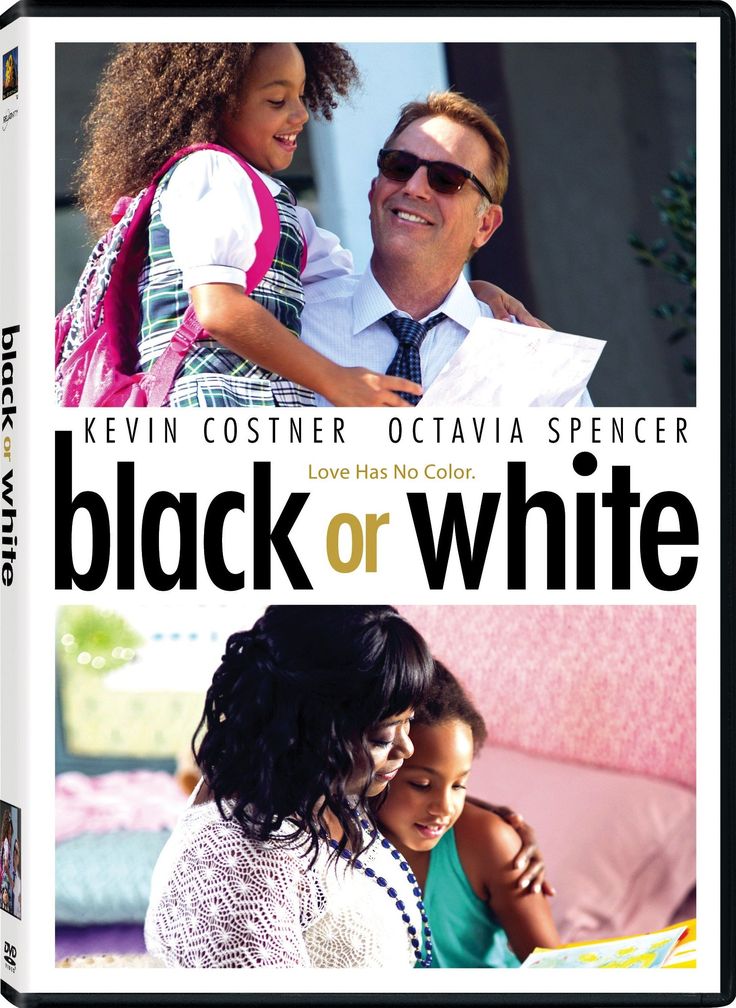 For an example, see Engel, Note 1, above, who calls this category "fallacies of presumption" (Chapter 4).
For an example, see Engel, Note 1, above, who calls this category "fallacies of presumption" (Chapter 4).
Revised: 5/9/2022
2. Black and White Fallacy
Definition
This fallacy arises when we illegitimately limit the number of alternatives available.
Example
1) You must be a Republican or Democrat. You are not a Democrat. Therefore, you must be a Republican.
The problem is the options are illegitimately limited; you could be a libertarian, anarchist, or socialist.
The premise for this fallacy is common:
Either support this bill or be unpatriotic. Either buy this car or be unhappy. Either vote for this law or be a Nazi. Either support all forms of abortion or be against all forms. You must support dualism or materialism. Either absolutely prove your point or it is all relative. Strong artificial intelligence is possible now or never. The president is either a genius or an idiot.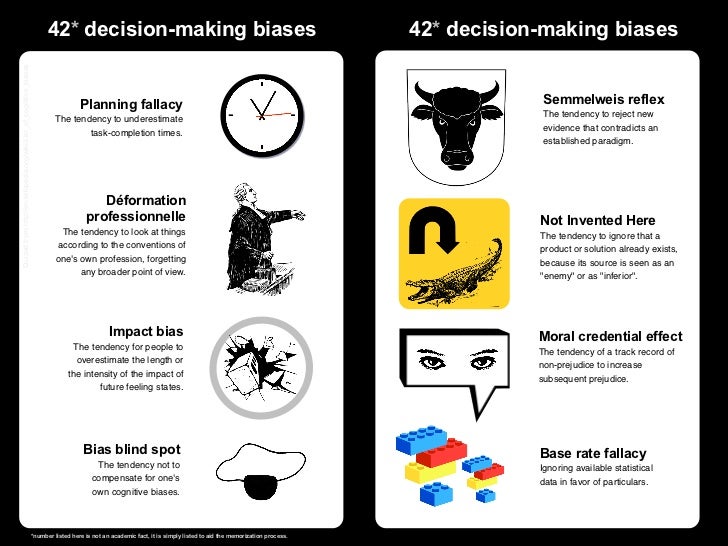 It is always wrong to lie or it is never wrong to lie. I need an A or my life will be ruined.
It is always wrong to lie or it is never wrong to lie. I need an A or my life will be ruined.
Discussion
It is important to remember that sometimes there really are limited options. For example, the following premises really do present a limited number of alternatives:
- I am either alive or dead.
- God either exists or does not exist.
- 2+2 equals 4 or it does not equal 4.
Keep in mind that people may use different names for the black and white thinking fallacy: false dilemma, false dichotomy, and the either/or fallacy, but they are all pretty much synonymous.
Cognitive therapists call it polarized thinking, and it often arises in therapy. For example, I might believe I am either a complete success or a complete failure, that everyone is for me or against me, or that each person is either entirely good or bad. The therapist can help me see how these fallacious forms of thinking cause destructive emotions. The stoics also recognized this and were, in a way, the first cognitive therapists. In short, logical thinking is one key to mental health.
In short, logical thinking is one key to mental health.
How to avoid
Think about each situation to identify whether there really are a limited number of options. Do not rely on emotion alone, which often sees in black and white.
Exercise
- Create or find some examples of this fallacy.
- For what conscious and subconscious reasons do we artificially limit our options?
- Is the “us/them” mentality a form of black and white thinking?
- How could an unethical salesperson use this fallacy to persuade?
Answers
- Answers will vary.
- According to Peg Tittle in Critical Thinking: An Appeal to Reason (2011), one reason people fall for this fallacy is because they lack imagination and cannot see more than two alternatives. Another reason people use this fallacy is to make it seem as though there is only one opposing and awful solution. If that is the only option, then any other solution looks good in comparison!
- Arbitrarily dividing the world into superior us and inferior them is the source of much evil and suffering.
 One of the causes of this type of thinking is seeing others as entirely good or bad.
One of the causes of this type of thinking is seeing others as entirely good or bad. - Answers will vary.
Return to Logic Home Page Go to Next Fallacy in Chapter 3 Go to Chapter 4 (S Method)
Black and White... - The Divine Skete — LiveJournal but not from the point of view of its inhabitants) or "Kiev" (after the name of the capital - Kiev), the East Slavic tribes merged and melted into a new community - the Russian people (from the standpoint of modernity, called Old Russian). , Christian, Orthodox, with a "Russian accent" - Thor), a uniform spiritual and material culture (but here I categorically disagree - I will not speak for material culture, this is like a separate conversation, here you have to be more of an archaeologist, which I I am not, and not a historian, but I’ll say it for the spiritual culture.Here, as for me, this is a big delusion, and first of all because for the most part both historians, and even more so non-historians, judge the spiritual cult re according to the texts, but in relation to the Middle Ages, and not only in relation to it, it is a big mistake to believe that the written, imprinted in the texts, culture reflects the true level of spiritual culture.
 This is just the tip of the iceberg, and0% of this very spiritual culture remains outside our field of vision, and we can only indirectly judge what it is. Of course, a very, very thin layer - "the circle of these people is narrow, they are terribly far from the people" - of medieval Russian scribes was to a certain extent a monolith, compressed (but not to the point of complete petrification and uniformity) by a single ideology (Orthodoxy) and one and the same same texts. But to what extent were those ideas that circulated in the book environment accepted by the bulk of the inhabitants of that same pre-Mongolian Rus'? It seems that the answer to this question will only be negative - there was no special "unity" of spiritual culture at the "underwater" level, there was no sense of spiritual kinship then and could not be, by definition, and there are a lot of examples of this in the annals. In general, this is a rather serious, in my opinion, delusion, an incorrect premise, on the basis of which incorrect conclusions will later be drawn - Thor) by one political system and the ruling dynasty (yes, one dynasty, but the political system is also another question how it was united - Thor), one language (literary and colloquial), mentality (again - literary language, bookish language - yes, it was more or less united, but what about spoken language? Here again I dare to disagree - Thor.
This is just the tip of the iceberg, and0% of this very spiritual culture remains outside our field of vision, and we can only indirectly judge what it is. Of course, a very, very thin layer - "the circle of these people is narrow, they are terribly far from the people" - of medieval Russian scribes was to a certain extent a monolith, compressed (but not to the point of complete petrification and uniformity) by a single ideology (Orthodoxy) and one and the same same texts. But to what extent were those ideas that circulated in the book environment accepted by the bulk of the inhabitants of that same pre-Mongolian Rus'? It seems that the answer to this question will only be negative - there was no special "unity" of spiritual culture at the "underwater" level, there was no sense of spiritual kinship then and could not be, by definition, and there are a lot of examples of this in the annals. In general, this is a rather serious, in my opinion, delusion, an incorrect premise, on the basis of which incorrect conclusions will later be drawn - Thor) by one political system and the ruling dynasty (yes, one dynasty, but the political system is also another question how it was united - Thor), one language (literary and colloquial), mentality (again - literary language, bookish language - yes, it was more or less united, but what about spoken language? Here again I dare to disagree - Thor.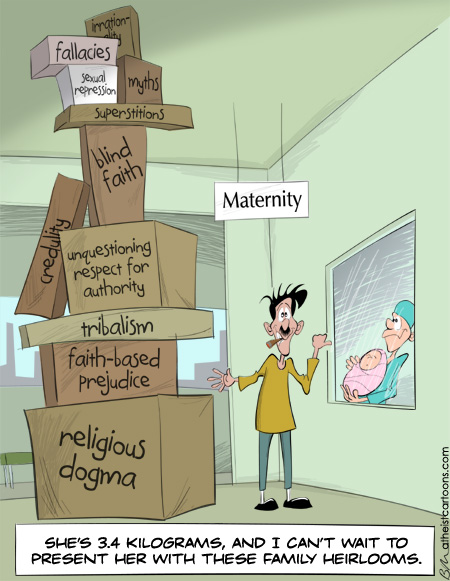 By the way, this also applies to mentality) and, which is extremely important, ethnic appearance and self-consciousness (appearance - here, maybe yes, although again, I'm not an anthropologist. But as for self-consciousness - there is confusion again - it's not worth confuse the self-consciousness of the scribe, reflected in the texts that came out from under his pen, or the self-consciousness of the Rurikovichs, who for a long time (perhaps until the beginning of the 13th century and even further) believed that the entire "Russian Land" (and that's another question, what in did it include?) is their common family ownership and business, with the self-consciousness of the natives who inhabited different "lands" that were part of the "Russian Land" in the broad and narrow senses. As a result, we have at least two self-consciousnesses, different in their essence - roughly speaking, "bookish", "all-Russian" and "non-bookish", purely particularistic and small-town. And, since the shtetl predominated numerically, it was precisely this, by and large, that determined the general appearance of self-consciousness - Thor).
By the way, this also applies to mentality) and, which is extremely important, ethnic appearance and self-consciousness (appearance - here, maybe yes, although again, I'm not an anthropologist. But as for self-consciousness - there is confusion again - it's not worth confuse the self-consciousness of the scribe, reflected in the texts that came out from under his pen, or the self-consciousness of the Rurikovichs, who for a long time (perhaps until the beginning of the 13th century and even further) believed that the entire "Russian Land" (and that's another question, what in did it include?) is their common family ownership and business, with the self-consciousness of the natives who inhabited different "lands" that were part of the "Russian Land" in the broad and narrow senses. As a result, we have at least two self-consciousnesses, different in their essence - roughly speaking, "bookish", "all-Russian" and "non-bookish", purely particularistic and small-town. And, since the shtetl predominated numerically, it was precisely this, by and large, that determined the general appearance of self-consciousness - Thor).
And one more thing - "despite all the subsequent historical vicissitudes, in which this space (meaning the same" Russian land "), and the political events that changed its appearance, it continued to be understood as "Russian" and its people , and, no less important, neighbors of other ethnicities". I will not speak for the neighbors - we have so everyone who is not "ours" was called "Germans" that way. But as for the "internal", so I will not be silent here either. As for me, there was no “Russian” then, understanding in those glorious times “Russianness” precisely as a purely ethnic principle. First of all, the emphasis was on the religious component, on Orthodoxy, and the terms "Russian" and "Orthodox" largely coincided (sometimes to the point of complete synonymy), acting as a kind of "markers" for determining "one's own" - "not one's", "alien" . And then, belonging to one, it would seem, linguistic and religious community, the proximity of culture and customs did not interfere, however, with the "Muscovites" and "Litvins" at the end of the 15th - 16th centuries.
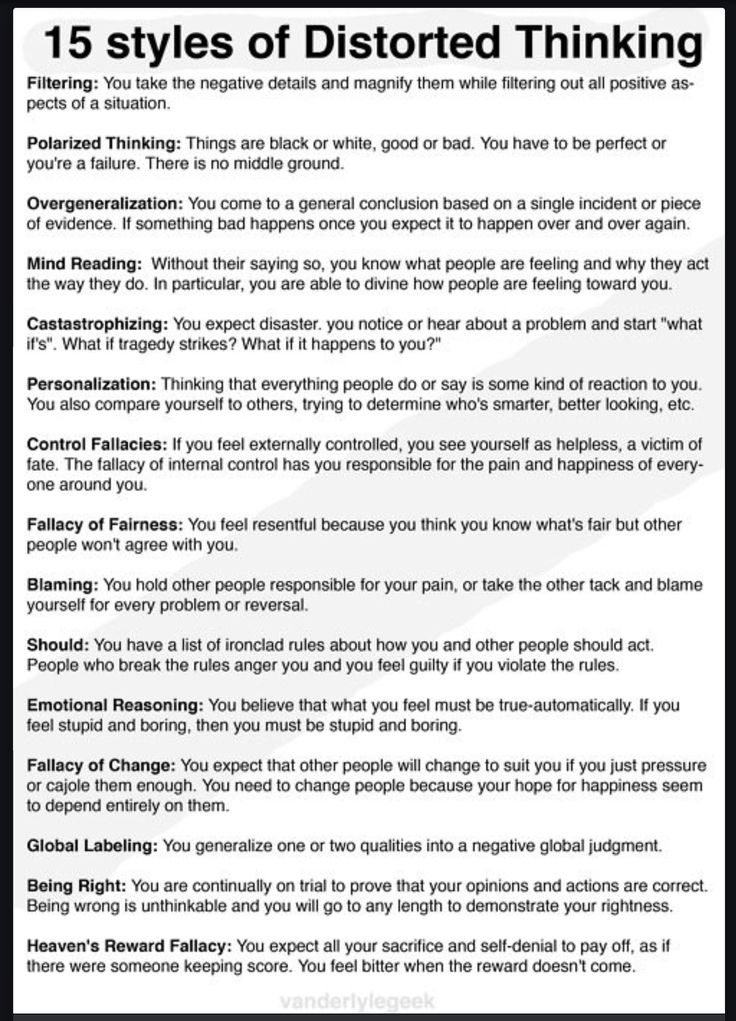 with passion to cut each other - politics, however, they are allegiance.
with passion to cut each other - politics, however, they are allegiance. In general, there is, in my purely unenlightened opinion, a serious system error ...
This was "black". And now - "white". The journal History of Military Affairs, known to all of us: research and sources, does not stand still, but develops and strives to new heights. And here is the first example of this: Akhmetov R.B., Babulin I.B. Belgorod order of the Moscow archers in 1658-1680. Essay on regimental history. Everything (except for the internal design) as usual - download and read! By the way, I highly recommend!
“All or nothing…” . Self Therapist [How to Change Your Life with Cognitive Behavioral Therapy]
People with such a vision of the world evaluate things on a scale on which, in fact, there are only two divisions. Usually this leads to such conclusions: "You are either "for" or "against" us" or: "You are either right or wrong." People who have these kinds of "mistaken thoughts", who believe that "it's all or nothing", often fall into the delusion that everything can be divided into "good" and "bad", and between these two concepts there is a little "gray » shades or none at all.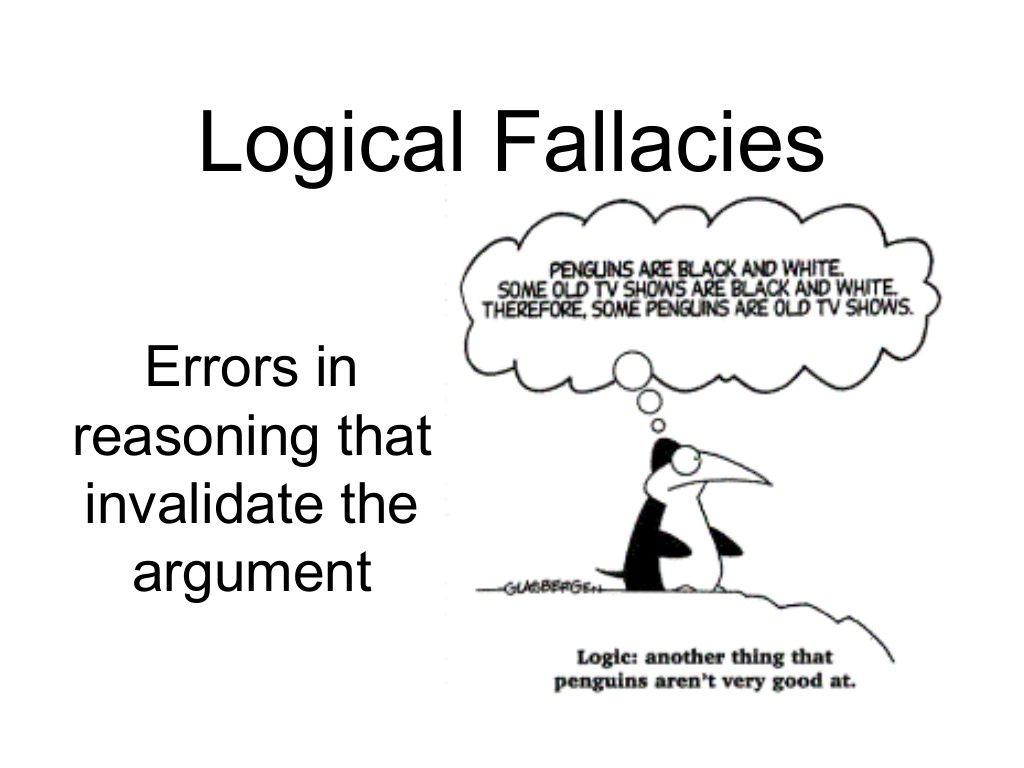 While such a view of the world can be extremely beneficial for politicians and decision makers, it leaves no room for the multi-faceted shades of gray between such opposites as "black" and "white."
While such a view of the world can be extremely beneficial for politicians and decision makers, it leaves no room for the multi-faceted shades of gray between such opposites as "black" and "white."
Real life example
Bernadette is 38 and runs a flower shop with her old school friend Daisy, who is 37. Bernadette is very demanding and likes to be bossy. She orders goods, maintains documentation and handles all administrative work. Daisy, on the other hand, folds bouquets, oversees the design of the room and communicates with customers. One day, Bernadette falls ill, which has never happened to her before, and does not go to work, so Daisy has to take over Bernadette's duties. She decides to order more red gerberas as they sell well and are offered at a bargain price. Daisy usually asks Bernadette when to make this kind of decision, but she doesn't want to bother Bernadette because she doesn't feel well. Deep down, Daisy is a little worried about how Bernadette will react to this, but at the same time, Daisy is confident that her decision will have a good effect on the business.
Even though all the gerberas are sold out the next day, Bernadette is outraged that Daisy made an extra order and disrupted the usual order of things.
Instead of admitting Daisy was right, Bernadette got mad at Daisy for interfering with her work. Bernadette doesn't see that Daisy wanted to help by taking the lead. Bernadette believes that Daisy has decided to question her authority.
Bernadette didn't thank Daisy, instead she picks on her friend again and again, and Daisy feels like she messed something up (however she obviously did the right thing). This situation makes Daisy understand that she should never take the initiative, she is offended that her friend treats her so unfairly.
Daisy's reaction further encourages Bernadette to see things in black and white. And this deprives her subordinates of any desire to offer their ideas. Over time, it will become obvious that such an attitude will only lead to unnecessary costs and losses, especially if Daisy wants to start her own business.
The disadvantage of the "black and white" worldview is that it leaves no room for more complex and precise assessments. Such "black and white" thoughts are very stable and radical. Life is much more complicated - it cannot be divided into "good" and "bad". And for those who think and behave in accordance with the "black and white" vision of the world, it can be very difficult to cope with life's difficulties.
For example, if you wanted to divide a group of children into "good" and "bad" and tried to line them up in a playground according to these characteristics, it would be very difficult for you to draw a line between the two groups. In every child you would find something bad and something good. You would encounter a huge number of "uncertainties", and it is these "uncertainties" that people with a black-and-white vision of the world have the hardest time dealing with.
While this attitude to the world around you may seem to you a sign of "persistence" and "principledness", it can also indicate your radicalism and rigidity. Wars and family quarrels in which no one takes prisoners (literally) are born because of such a categorical "black and white" view of things. When it is considered weakness to admit the existence of shades of gray, there is nothing left but to choose one of the sides. (Divorce or disagreements between business partners can also proceed in a similar way).
Wars and family quarrels in which no one takes prisoners (literally) are born because of such a categorical "black and white" view of things. When it is considered weakness to admit the existence of shades of gray, there is nothing left but to choose one of the sides. (Divorce or disagreements between business partners can also proceed in a similar way).
The danger is that you may miss the value of something that is in shades of gray and allow you to see things in a new way, seeing alternative solutions, while you carefully divide everything into black and white.
Checking for change
Test yourself for the “black and white vision of the world”
• Watch out for "black and white thoughts" in which you use sentences such as "should", "must", "no choice", etc.
• Try to look at the situation through the eyes of a person from the opposite side, and take a look at your position: how are your views similar and how are they different?
• Try to tell yourself that the situation is more complicated, and try to find both the good and the bad in it by formulating it in your mind or writing it out on a piece of paper.